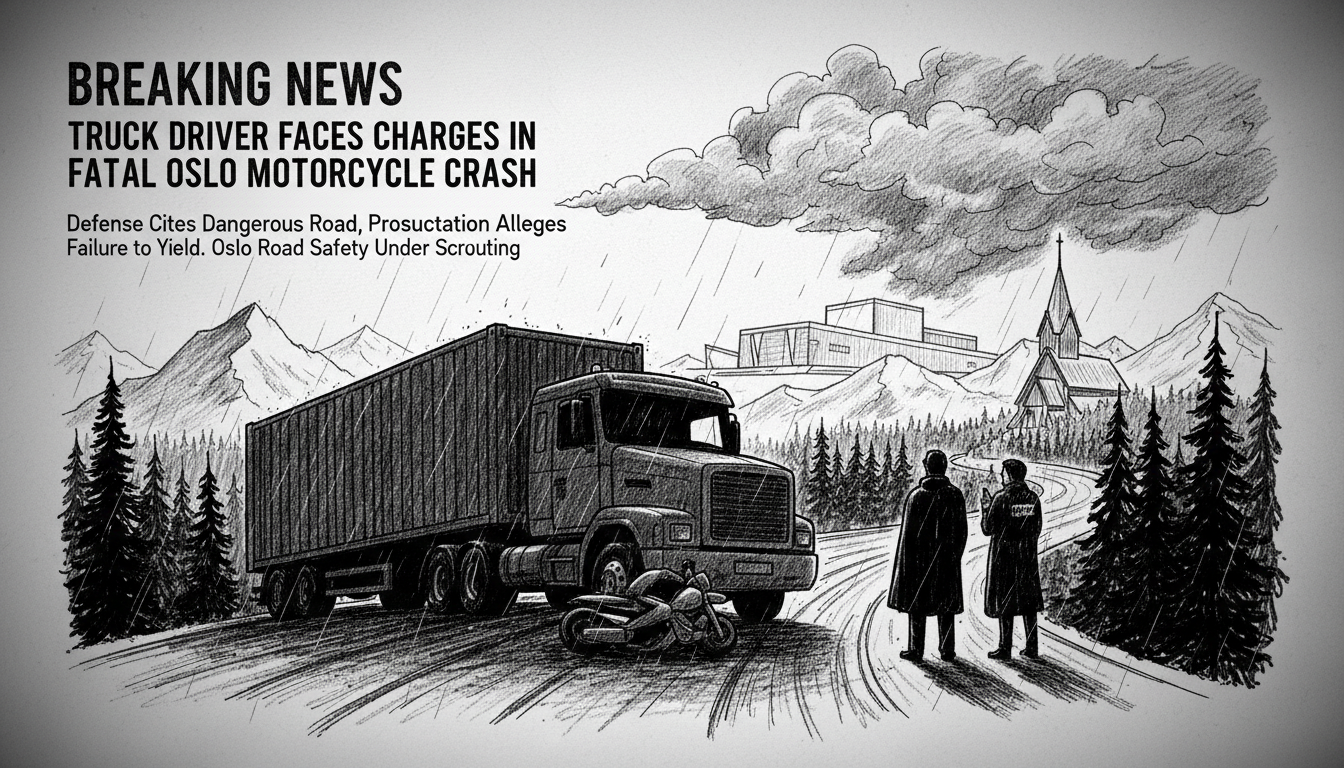A truck driver in his seventies faces criminal charges for a fatal collision that killed a young motorcyclist on Trondheimsveien in Oslo. The accident occurred when the truck pulled onto the main road from a gravel plant near Bånkall. The 20-year-old motorcycle rider died instantly at the scene.
The crash happened in August last year. The case will receive one day in Oslo District Court next month. Prosecutors allege the truck driver failed to yield properly when entering Trondheimsveien from the gravel plant exit near Fossum intersection and Stovner.
Defense lawyer Ståle Gunnar Folkestad strongly contests the charges. He claims his client acted responsibly. The driver stopped and looked both directions before proceeding. Folkestad argues the heavy truck needed time to accelerate. The motorcycle collided with the rear portion of the vehicle while approaching from the driver's left side.
The defense conducted timing tests at the accident location. Vehicles coming from Gjelleråsen direction take five to six seconds to reach the gravel plant exit after becoming visible. Folkestad describes this as an inherently dangerous stretch of road. He expressed surprise that more accidents don't occur there given the limited visibility.
This incident ended a sixty-year driving career. The truck driver retired immediately following the crash. His attorney emphasized this was his client's first accident in six decades of professional driving. The event has profoundly affected the elderly driver. The defense acknowledges the tragedy also weighs heavily on the deceased rider's family.
Prosecutor Viktor Alan Brekke maintains the charges are justified. The Norwegian Public Roads Administration analyzed the incident. Their report concludes the collision was preventable. The truck driver had clear responsibility to yield. Road authorities determined he should have seen the approaching motorcycle even if it slightly exceeded the 60 km/h speed limit.
Brekke clarified that investigators haven't determined whether the motorcyclist was speeding. When questioned about the road's visibility issues, he referenced the official report. It states the driver should have spotted the motorcycle with proper observation to the left.
This case highlights ongoing road safety challenges in Norway's capital. Oslo continues working to balance efficient transportation with pedestrian and cyclist safety. The city has implemented various traffic calming measures in recent years. This tragic incident near Stovner demonstrates how dangerous configurations persist despite improvement efforts.
Norwegian traffic law places strong emphasis on yielding responsibility. The legal outcome will depend on whether the court finds the driver's observation adequate given the road conditions. Both legal teams prepare to present technical evidence about sight lines and reaction times.
The upcoming court hearing will examine conflicting interpretations of responsibility. It represents another test of how Norway's legal system handles complex traffic accidents involving vulnerable road users. The decision could influence future infrastructure improvements along similar problematic road sections.

